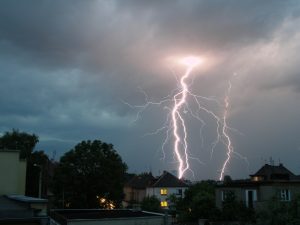 As Tropical Cyclone Alfred approaches Queensland, Australia, residents and businesses must take proactive measures to safeguard their belongings and properties. Using storage facilities effectively during such extreme weather events can significantly reduce potential damage. This guide provides comprehensive steps on how to prepare and use storage solutions in anticipation of a cyclone.
As Tropical Cyclone Alfred approaches Queensland, Australia, residents and businesses must take proactive measures to safeguard their belongings and properties. Using storage facilities effectively during such extreme weather events can significantly reduce potential damage. This guide provides comprehensive steps on how to prepare and use storage solutions in anticipation of a cyclone.
Understanding the Threat of Tropical Cyclone Alfred
Tropical Cyclone Alfred, currently a Category 2 system, is expected to make landfall between the Sunshine Coast and Gold Coast regions on Saturday. The cyclone brings concerns of significant flooding, particularly in Brisbane, with winds gusting up to 130 km/h and potential flooding threatening up to 20,000 homes. (APNews.com) Authorities have issued warnings for destructive winds, storm surges, flash flooding, and heavy rain. (CourierMail.com.au)
Assessing Your Storage Needs
Before deciding on a storage solution, evaluate the items you need to protect:
- Essential Documents and Valuables: Important papers, photographs, and small valuables.
- Electronics: Computers, televisions, and other electronic devices.
- Furniture and Appliances: Large items that could be damaged by water or wind.
- Vehicles and Equipment: Cars, motorcycles, bicycles, and outdoor machinery.
Choosing the Right Storage Facility
When selecting a storage facility during cyclone conditions, consider the following factors:
- Location: Choose a facility located on higher ground, away from flood-prone areas.
- Building Standards: Ensure the facility is constructed to withstand cyclonic winds. Properties built after the mid-1980s in Queensland are generally designed to endure such conditions. (Business.qld.gov.au)
- Security Measures: The facility should have robust security to protect against security issues during and after the cyclone.
Preparing Items for Storage
Proper preparation of your belongings can prevent damage:
- Documentation: Place essential documents in waterproof containers.
- Electronics: Disconnect and pack electronics in original packaging or sturdy boxes with cushioning materials.
- Furniture: Disassemble large furniture when possible and wrap items in protective materials to prevent scratches and water damage.
- Vehicles: Ensure vehicles are serviced, fuel tanks are full, and consider using fuel storage tanks to maintain operations during and after the cyclone. (Fuelfix.com.au)
Securing Standalone Storage Units
If you’re using a standalone storage unit or container, here’s how to enhance the safety of your stored items:
- Elevate Belongings: Use pallets or shelving to keep items off the ground, reducing the risk of water damage from minor flooding.
- Seal Openings: Ensure doors and windows of the storage unit are properly sealed to prevent water ingress.
- Anchor Structures: If using temporary storage solutions like shipping containers, ensure they are securely anchored to prevent movement during high winds. (Dallcon.com.au)
Alternative Storage Solutions
If traditional storage facilities are not available:
- Strong Rooms: Construct or utilise an existing strong room within your property. These are reinforced areas designed to withstand extreme weather and can serve as temporary storage. (JSU.edu.au)
- Mezzanine Floors: In warehouses or large buildings, mezzanine floors can provide elevated storage, keeping items above potential flood levels. (Adexgroup.com.au)
Additional Preparations
Beyond storage, consider these measures:
- Emergency Kit: Prepare a kit with non-perishable food, water, medications, first-aid supplies, flashlights, batteries, toiletries, a radio, and pet necessities. (News.com.au)
- Evacuation Plan: Establish a clear plan for evacuation, including safe routes and destinations.
- Communication: Keep informed through local news and weather updates to stay aware of the cyclone’s progress and any emergency instructions.
After the Cyclone
Once the cyclone has passed:
- Assess Damage: Carefully inspect your property and storage facility for any damage before moving items back.
- Insurance Claims: Document any damage with photographs and contact your insurance provider promptly.
- Restock Emergency Supplies: Replenish any used items in your emergency kit to prepare for future events.
By thoughtfully selecting and preparing storage solutions, you can significantly mitigate the risks posed by Tropical Cyclone Alfred and protect your valuable possessions.
Stay safe during this extreme weather. Contact us for quick and easy storage.




